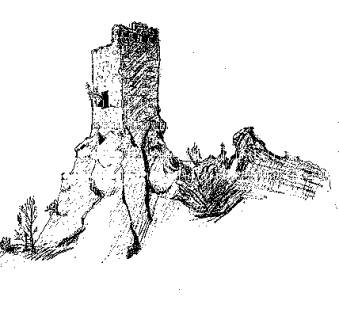Legend has it, that the Baron d’Openac built his castle at Roquebrun so as to prey from this vantage point on any passing pilgrims on their way to the Abbaye de Fontcaude, or returning from the monasteries of Montels and Villemagne. He earned the nickname “Le Baron Tempete” from his habit of welcoming those unfortunates during inclement weather and then robbing them and turning them out wearing only a shift! The castle was impregnable and the Baron became more and more daring, even stealing livestock from the Abbaye de Fontcaude. People started to search for an alternate route and most travelers started to use a new route by way of St Chinian and St Pons. At this point a young novice monk, named Poncian, came upon the scene. Undeterred by the Baron, he came to live near to Roquebrun and brought with him two saplings, a lemon and an orange, and some mimosa seeds. He duly planted the saplings, and sowed the seeds, which started to flourish. Daily, he walked the banks of the River Orb to the village of Ceps where, on a huge rock, he prayed. This infuriated the Baron who called upon the Devil to help rid him of the troublesome monk. The Devil agreed, against his normal fee, the Baron’s soul. To demonstrate his power Satan called up a terrible storm, which came rapidly towards Ceps, with, billowing clouds, lightening, thunder and tremendous winds whipping the surface of the Orb. Miraculously because of the strength of Poncian's prayers the storm stopped, and not a single orange, lemon or mimosa was harmed. The climate became milder and the mimosa flourished. The Baron was beside himself with rage, but despite his failure, the devil called upon him to surrender his soul to compensate for the work he had done, but the Baron refused. The Devil called up a thunderbolt to strike the castle, which crumbled, into ruins. Only the tower was left. The Devil then took away the blackened cinders, which was all that remained of the Baron’s body, so that his soul should not escape. Roquebrun’s mild climate had been established, and has, since time immemorial, been known as “Petit Nice”. The villagers built a chapel dedicated to their benefactor, that stands to this day, and there are those exotic plants that survive to bear witness to the legend of St Poncian.

